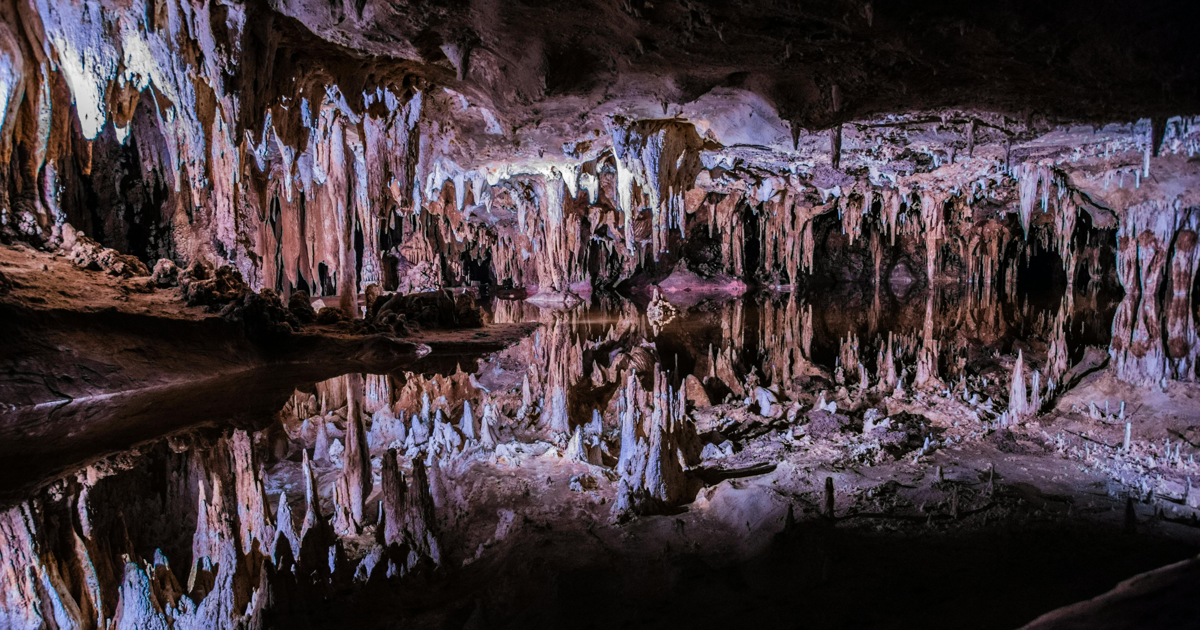
As Hagrid takes Harry Potter on his first venture into the Wizarding World in Harry Potter and the Sorcerer’s Stone, the pair descend by cart into the caves of Gringotts Wizarding Bank.
‘“I never know,” Harry called to Hagrid over the noise of the cart, “what’s the difference between a stalagmite and a stalactite?”
“Stalagmite’s got an ‘m’ in it,” said Hagrid.’
This simple couplet of dialogue gives a relatability to this most unlikely of fantasy journeys. Wizards and muggles alike, it seems, find the difference between stalactites and stalagmites incredibly confusing.
With this common confusion in mind, IFLScience decided to create a myth-busting guide to these awe-inspiring cave structures.
But what exactly are stalactites and stalagmites? These mineral deposits, which grow from the roof and floor of a cave are very familiar to anyone who has explored a cave structure.
With an appearance that is very similar to an icicle, they grow in much the same way too, as IFLScience (quoting the National Oceanic and Atmospheric Association) explain:
“The bread and butter of the mineral formations are undoubtedly stalactites and stalagmites. Formed by mineral deposits building up from precipitation within the cave, stalactites are the icicle-shaped formations that hang from the ceilings. Stalagmites are their upward growing partners that form as water is dripped from the roof onto the floor, creating mineral deposits that form from the ground up.”
And when it comes to remembering the difference between the two, IFLScience offer some nifty tricks:
“There are many fun ways to remember which one is which; some suggest that (stalag)mites crawl up your legs and (stalac)tites fall down, or use the “g” in stalagmites to refer to them growing up from the ground, and the “t” in stalactites as the top of the cave.”
When stalagmites and stalactites grow so long that they eventually touch, they can join up and become known as a column. And these are just some of the more unusual formations that we can find in caves.
Whatever their shape, these mineral deposits – which take thousands of years to form – can be the key to unlocking ancient history too, with IFLScience reporting some of the many different phenomenon found when we explore caves:
“While stalactites and stalagmites are referred to as dripstones, because they are formed by dripping water, many other types of cave formations also occur. Columns are created when stalactites and stalagmites join up together, while the bizarre “cave popcorn” is formed when water comes through pores in the rocks, forming rounded bumps that resemble popcorn and in some cases trapping skeletons inside forever.
In the Eastern United States, a vast expanse of stalactites and stalagmites have formed the world’s biggest musical instrument.
Funky flowstones can also occur when the water travels over the walls in sheets, creating longer layers. These can contain different colored mineral deposits, earning the nickname “cave bacon” due to their streaky appearance.”
In the most hidden places, some of the most beautiful natural phenomena can be found.
Why not check out some caves near to you, and see if you can finally remember the difference between stalagmite and stalactite!
If you thought that was interesting, you might like to read a story that reveals Earth’s priciest precious metal isn’t gold or platinum and costs over $10,000 an ounce!